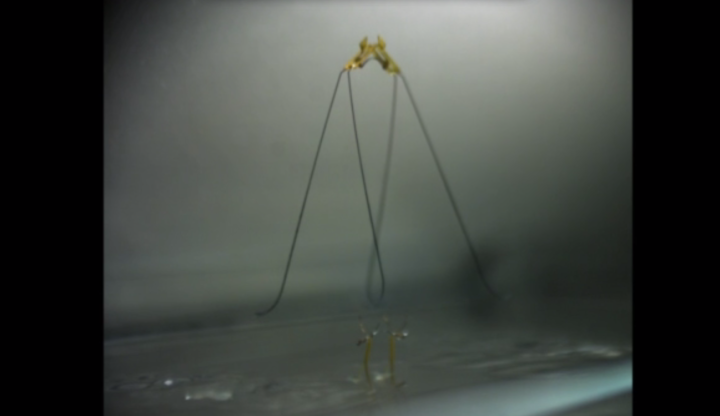
Weighing in at just two-thousandths of an ounce and measuring 3/4 of an inch in length, what the minuscule robot lacks in size, it makes up for in power and, more importantly, precision. “Water’s surface needs to be pressed at the right speed for an adequate amount of time, up to a certain depth, in order to achieve jumping,” one of the leading researchers, Kyu Jin Cho, said. “The water strider is capable of doing all these things flawlessly.”
Robert Wood, a Harvard professor who founded the Harvard microrobotics lab that has been responsible for a number of these incredible scientific innovations, added, “If you apply as much force as quickly as possible on water, the limbs will break through the surface and you won’t get anywhere.” But the team solved for this problem by that the little machine maintained “leg contact on the water for as long as possible during the jump motion.” This same principle is what allows water striders and other similar insects to fly, float, swim, or jump on water despite their small size and seemingly limited power resources.
Of course, this isn’t just a cool science project — in addition to developing a “new extreme form of robotic locomotion” and providing “new insights on the natural mechanics at play in water striders,” scientists also believe that these robots may be used in search operations. The tiny artificial insects, which can jump as high on water as they can on land, were also relatively easy to assemble, and could be produced en masse should the need ever arise to create an army of these little guys for a mission.
And just maybe, we’ll be the next organisms that science allows to walk on water.


